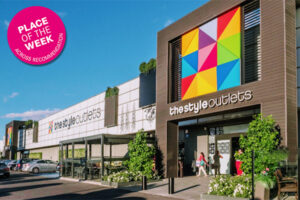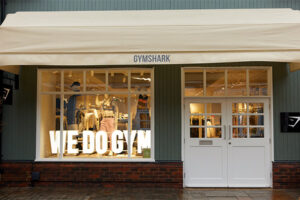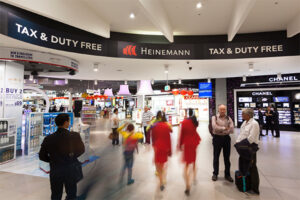The shopping center industry has discovered a new trend. “Food and beverage” is the magic phrase developers and operators are currently parading around like some sacred monstrance. The global food and beverage (F&B) market has seen continuous growth rates in recent years and experts say they will continue for quite some time.
“The proportion of comparison retail (clothing, footwear, white goods) as a percentage of total retail is decreasing and is being partially replaced by F&B, leisure, and entertainment offerings in shopping malls, out-of-town retail parks, and the main retail thoroughfares. This is driven by changing consumer shopping habits and the growth of ‘experience retailing,’ reflecting consumers’ desire to enhance their physical shopping experience with a social/leisure experience.
This is being seen not just in the more mature retail markets in the US and Europe, but also in fast-growing emerging markets in Asia Pacific and the Middle East & Africa,” reported Cushman & Wakefield in its most recent study on the topic: “The Global Food & Beverage Market—What’s on the Menu?”
It is thus not surprising that food courts, food and beverage areas, stand-alone restaurants, and kiosks are currently written in bold print on operators’ blueprints for new shopping center developments, refurbishments, and extensions. Their promise: A select food and beverage offer will provide increased footfall, longer stays, and, ultimately, even more sales. Various studies show this to be true, at least on paper.
The food offer determines a center’s selection
Malls in the EMEA region (Europe, Middle East, and Africa) are consumers’ preferred places to eat and drink. This was the conclusion from CBRE’s recently published “Food and Beverage in Shopping Centers” report.
Of a total of 22,000 people surveyed across Europe, 41% said they looked to shopping centers primarily for eating and drinking. Only 10% chose restaurants and cafés in the city center, while another 7% chose retail parks. In addition, more than 30% of the interviewees indicated that they visited shopping centers only to eat and drink. Four out of every 10 people surveyed went shopping in the mall after their meal there, even though they had originally only been interested in food or drinks.
“This shows that there is considerable synergy between gastronomy and shopping in shopping centers. Adequate foodservice helps to increase the length of stay and the average turnover per visitor,” says Walter Wölfler, Head of Retail at CBRE Austria.
Europe’s shopping center operators are reacting. According to various expert opinions, the share of floor space in malls dedicated to foodservice has almost doubled in recent years in Central Europe. But is food really the new fashion and can an extension of food courts and the like compensate for the tendency of fashion to move online and the drop in sales space among consumer electronics retailers?

Quality before quantity
At present, the answer is probably “only partly.” “A varied gastronomic offer combined with an appealing ambiance has become very important. Shopping center owners and operators must still develop modern concepts with high quality of stay to meet consumers’ rising demands. Nevertheless, 43% of customers currently report that good restaurants are lacking and 45% say that healthy nutrition is absent in malls,” Wölfler reported.
That is precisely the point and matches current consumer trends. Cafes, restaurants, and bars have evolved in recent years into society’s public living rooms. A feel-good atmosphere combined with a dose of surprise and high-quality food seem to form the basis for successful food concepts. A mere quantitative expansion of gastro surfaces without innovative food retailers will bring shopping center operators into decline faster than previously thought.
Consumers today are driven by a sense of exploration or simply a fear of missing out and are always on the hunt for new experiences. Food and beverage operators still need to maintain the quality of their offer while simultaneously increasing customer engagement through personalized offers and training staff to make ordering suggestions based on guests’ previously expressed preferences.
Restaurants are providing novel, fun, and memorable meals through pop-up restaurants and “secret” or entertainment-themed venues, offering customers a thrill for just finding the location. Venues that typically place experience over food and drink, including sporting events and music festivals, are now upgrading their menus to complement the experience. Today’s educated consumers expect a top-notch dining experience. This is particularly true at higher-end establishments, the most recent Cushman & Wakefield report stated.
Malls have to adapt to this changing food culture. By doing this, they will bring new customers. Until relatively recently, the food & beverage offer in shopping centers was confined to food courts, with their common seating area surrounded by a plethora of fast food operators such as McDonalds, Burger King, KFC, Taco Bell, and so on.
Very few mall owners deviated from this pattern until around 10 years ago, when some decided to incorporate “fast casual” concepts. There is now considerably more diversity in the food court offer and some landlords are rethinking and upgrading their food courts. Malls are dominated by mainstream global food brands that the mass market appreciates.
As these brands can afford to pay higher rents and operating expenses, they continue to proliferate even in the new generation of shopping malls. It would be easy to be too hard on shopping mall owners and their short-term financial vision to explain why food areas are still a bit dull. Some food brands have a tendency to replicate their formats with little consideration given to the characteristics of local shoppers.
More recently, F&B has been more widely distributed through malls and other concepts have evolved, including the food hall. There is also a move towards the creation of different zones within the mall, with the emphasis moving away from the food court. Outside seating is also increasinly being provided. The re-purposing of real estate, such as converting a shop unit into a restaurant, is not necessarily the way forward, however, if it does not create the right environment for today’s consumers.
ECE is working on how a contemporary food destination could look in the future in the Frankfurt shopping center MyZeil. The new gastronomy concept on the fourth floor provides seven different themes with a particularly varied range of different, high-quality, international and regional food and bar concepts and is set to open in the spring of 2019.
The aim of this “Foodtopia” is to provide the right offer for every time of day and every taste during a center’s entire opening hours, from morning to late evening: from the café bar to high-quality lunch concepts in the fast-casual area during the lunch break, to a casual dining area with more exclusive dinner providers and cool bars for the evenings and into the night.
“Foodtopia is not just another food court—it’s much, much more than that,” said Jonathan Doughty, the Global Head of Food Service at ECE, highlighting the idea behind the concept. “Our goal is to create a perfect place with an extensive gastronomic offer for different occasions and different tastes—and a wide range of experiences, great quality, and excellent service. This idea includes a lot of things: delicious food and good drinks, but also emotion, atmosphere, unique experiences, a cool design, and MyZeil’s great architecture and spectacular views.”

Gourmetization of fast food
What do customers expect from their shopping center’s food and beverage offer? What current trends should operators keep in mind? It began with small burgers, which devoted great attention to the bun and patty, and has now made its way into top restaurants.
The “gourmetization” of fast food continues, however: Now come the sandwiches. More and more chefs are devoting themselves to the perfect combination of ingredients on toasted bread. Pizza has also made it to the new culinary heights. Locals serve their pizzas in a refined, chic ambiance. The pizzeria “485Grad” in Cologne and Düsseldorf unleashes storms of inspiration—along with honors and awards from the likes of Gault & Millau.
Soup to go: A strong bone broth is the new hot trend. The best is “to go,” as is customary in New York. Hip soup bars like “Brodo” in the East Village sell their broth in paper cups first thing in the morning. Coffee is “out” in New York—soup is now sipped on the way to work. “Brodo,” which was founded by top chef Marco Canora and also released “A Bone Broth Cookbook,” sells soups to-go for between $5 and $20.
Leaf to root, nose to fin: “From nose to tail” is the credo of deliberate meat lovers. In other words: eating the whole animal and not just its fillets. Why shouldn’t the same apply to plants and fish? Numerous food experts are already showing how many parts that land in the trash—such as carrot stems, watermelon peels, and bean leaves—could actually be used to create culinary delights. The trend towards complete use is now also hitting fish.
Eat organic, veggie, and purple: Whole Foods, the world’s largest health food store operator (€13 billion in sales), analyzed buying behavior in its 465 stores around the world. The result: health-conscious consumers are buying ever more reddish and violet food. Black rice, sweet potatoes, blueberries, violet asparagus and cauliflower, elderberries, and acai: These colorful ingredients not only look good on a plate, the antioxidants they contain make us look and feel younger. Eating a lot of purple foods is also supposed to reduce blood pressure and cholesterol levels.
Fermentation is also “in”: The technique of preserving food by lactic fermentation is ancient. But now, in the wake of the “do-it-yourself” ethos and “slow food,” it is becoming a socially acceptable, trend-setting activity.
Algae instead of fish: The new super food comes from the sea: Something Asians have been eating for thousands of years is now also conquering European kitchens—and it’s not sushi and maki. The diversity of algae excites nutritionists mainly because of their healthy ingredients. They contain a lot of vegetable protein, little fat, and hardly any calories. And as far as their use in the kitchen goes: The sky’s the limit.
We could continue with the list of current food trends for quite a while. All the trends have some essential cornerstones in common: Modern consumers primarily focus on regionality, sustainability, and a sense of responsibility. Setting the scene is also gaining importance.
At least on that score, many shopping center operators still have a lot of catching up to do. The good thing is: There’s still a little time. The new trend towards more food and beverage in the retail real estate market is probably not going away anytime soon.





